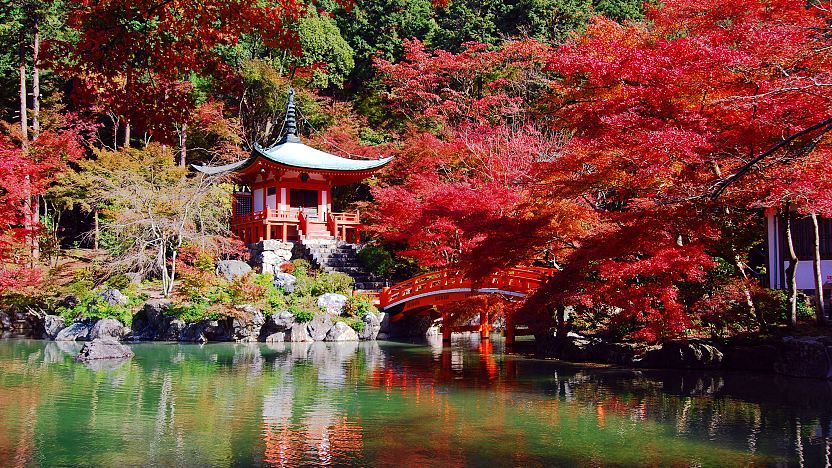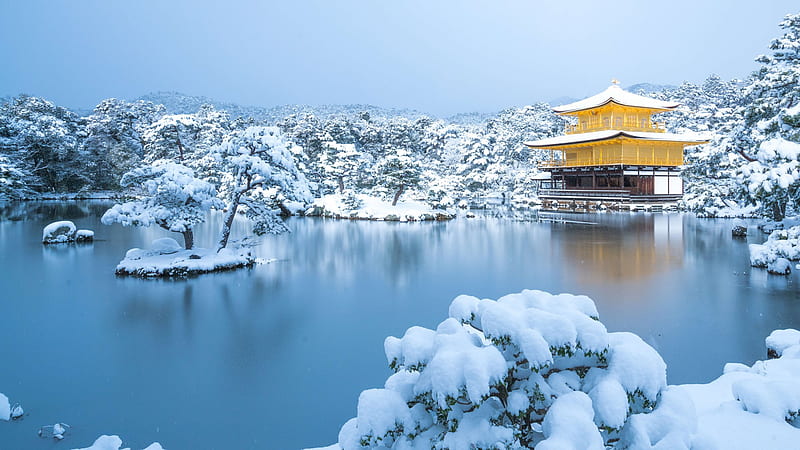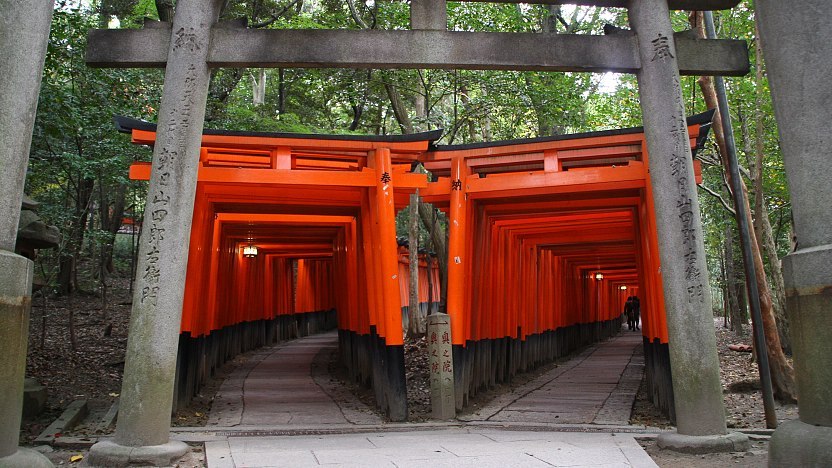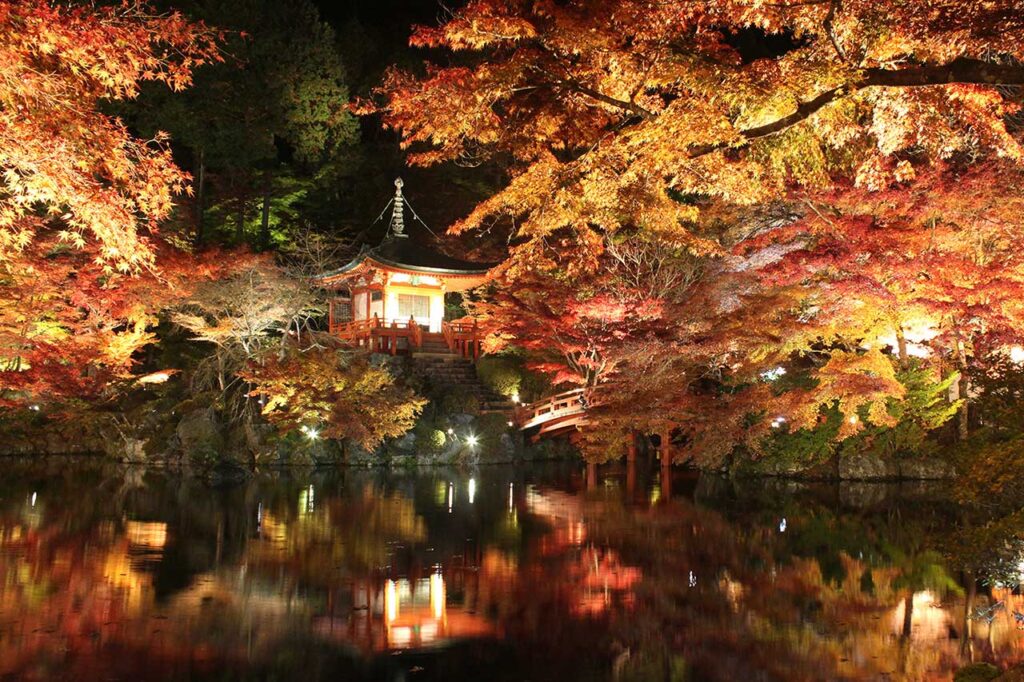







Kyoto is a city known for its ancient temples, peaceful gardens, and the quiet charm of Japan’s cultural heritage. Among the many UNESCO World Heritage Sites scattered across the city, Daigoji Temple holds a unique place. Nestled at the base of Mount Daigo and extending up its slopes, this Shingon Buddhist temple is both a religious site and a living museum of Japanese history, art, and architecture.
With a history dating back over 1,100 years, Daigoji is more than just a temple—it’s a journey through time. It offers travelers a rich blend of cultural experiences: from the elegance of traditional Japanese architecture to the vibrant seasonal colors that transform its gardens into living works of art. Visitors often describe their time at Daigoji as not merely sightseeing but as stepping into a harmonious space where nature, spirituality, and human craftsmanship coexist beautifully.

Founded in 874 AD by the monk Shobo (Rigen Daishi), Daigoji has long been associated with the imperial family and samurai lords. It became especially famous during the Heian Period when Emperor Daigo designated it as his place of worship and final resting place, giving the temple both its name and elevated status. Throughout its long history, Daigoji has played a pivotal role in Kyoto’s religious and cultural life.
The temple’s significance expanded over time, becoming a center for Shingon Buddhism and a retreat for emperors, nobles, and monks seeking enlightenment or respite. During the tumultuous Warring States period, Daigoji suffered damage, but thanks to influential patrons like Toyotomi Hideyoshi, it was restored and rejuvenated.
Key Historical Highlights:
Five-Story Pagoda (Goju-no-to): The oldest building in Kyoto, constructed in 951 AD, symbolizes enduring faith and the temple’s ancient roots.
Hideyoshi’s Hanami: In 1598, warlord Toyotomi Hideyoshi held his famous cherry blossom viewing party here, a tradition that still influences the temple’s springtime celebrations and continues to draw crowds annually.

Daigoji is divided into three main areas:
Sanboin (Upper Temple Complex)
Shimo Daigo (Lower Temple Complex)
Kami Daigo (Mountain Temple Complex)
Each section offers distinct experiences, from intricate architecture to serene natural landscapes.
The Sanboin area is the heart of Daigoji and houses the temple’s main hall and gardens, renowned for their meticulous design and historical significance. The garden, designed by legendary landscape architect Toyotomi Hideyoshi, exemplifies the aesthetics of the Momoyama period with its carefully arranged stones, ponds, and pruned pines that create scenes of natural harmony and philosophical reflection.
Sanboin Highlights:
Sanboin Garden: A masterpiece of Momoyama-period garden design, blending rocks, ponds, and manicured pines to create a serene landscape meant to evoke the idealized natural world.
Reception Hall (Omote Shoin): Known for its intricate screen paintings (fusuma-e) and traditional tatami-mat rooms that exemplify the refined architecture of the era.
Seasonal Beauty: In spring, cherry blossoms reflect in the ponds; in autumn, maples blaze in fiery reds and oranges.

Located at the foot of Mount Daigo, this area features some of Daigoji’s most iconic structures:
Bentendo Hall: Perhaps the most photographed spot in Daigoji, Bentendo Hall sits beside a reflective pond surrounded by maple trees, especially breathtaking during autumn. This hall is dedicated to Benzaiten, the goddess of everything that flows: water, words, eloquence, music.
Five-Story Pagoda: As Kyoto’s oldest wooden structure, it offers a powerful link to the city’s past and stands as a silent witness to centuries of change.
Kondo Hall: The temple’s main worship hall, rebuilt in the 17th century, showcases the resilience of Kyoto’s religious architecture. Inside, visitors can find significant Buddhist statues and relics.
This upper temple area requires a steep 90-minute hike up Mount Daigo but rewards visitors with tranquility, panoramic views, and a more rustic spiritual experience. Unlike the meticulously maintained gardens below, Kami Daigo feels more raw and untouched, appealing to those who seek both nature and solitude.
Original temple structures that have survived centuries amidst the forests.
Natural springs that gave Daigoji its name (“Daigo” means “ghee” or “the essence,” referring to purity).
Hiking trails lined with ancient cedars and moss-covered stones create a mystical atmosphere perfect for reflection.

Daigoji Temple offers distinct beauty across all four seasons, each transforming the temple’s grounds in unique ways:
Spring (March – April): Famous for cherry blossoms; Hideyoshi’s Hanami is re-enacted annually. Expect gardens alive with pink and white blooms.
Autumn (October – November): Renowned for spectacular fall foliage, particularly around Bentendo Hall where fiery reds and oranges reflect dramatically in the ponds.
Winter (December – February): Quiet and serene with occasional snow-draped landscapes turning the temple into a monochromatic wonderland.
Summer (June – August): Lush greenery envelops the area; though humid, it’s ideal for those seeking tranquility away from crowds.

By Subway:
Take the Tozai Line to Daigo Station. From there, it’s a 10-15 minute walk.
By Bus:
Kyoto City Bus #22 or #93 stops near the temple.
By Car:
Paid parking is available near the lower temple grounds.
Navigating Kyoto’s excellent public transport is part of the cultural experience, offering scenic views and efficient travel to this ancient site.

Opening Hours: 9:00 AM to 5:00 PM (last admission at 4:30 PM)
Admission Fees:
Sanboin & Garden: ¥1000
Shimo Daigo & Museum: ¥1000
Kami Daigo: ¥600
Combined Ticket Available: Offers access to all areas and the Reihokan Museum.
Facilities:
Rest areas and traditional tea houses.
Gift shops selling temple-themed souvenirs, charms, and Kyoto specialties.

Kyoto’s compact size makes it easy to pair Daigoji with other cultural gems:
Fushimi Inari Taisha: Famous for its thousands of red torii gates winding up Mount Inari.
Uji Byodoin Temple: Another UNESCO site, known for its Phoenix Hall depicted on the Japanese 10-yen coin.
Kyoto Imperial Palace and Gardens: Offers insight into Japan’s royal history with free guided tours.

Wear Comfortable Shoes: Especially essential if hiking to Kami Daigo.
Photography: Respect temple rules—some interiors may prohibit photos.
Mind the Seasons: Arrive early during sakura and koyo (autumn leaves) seasons to avoid crowds and capture the best light for photography.
Combine with a Day Trip: Pair Daigoji with nearby temples or Uji for a fulfilling day.
Join a Guided Tour: For deeper historical and cultural insights, guided tours often include fascinating details about the temple’s rituals, architecture, and spiritual significance.

Silence is Golden: Speak quietly to maintain the serene atmosphere.
Respect Boundaries: Stay on marked paths; some areas are off-limits to preserve nature and history.
Dress Modestly: Avoid flashy or overly casual attire. Modesty reflects respect in sacred spaces.
Participate in Rituals: Light incense, offer prayers—engage respectfully in the temple’s living traditions.
Daigoji Temple is more than a collection of beautiful buildings; it’s a profound representation of Japan’s spiritual heart, seamlessly blending nature, architecture, and history. Whether you’re standing beneath cherry blossoms, wandering through crimson autumn leaves, or quietly reflecting in a moss-covered garden, Daigoji invites you to slow down and experience the timeless essence of Kyoto.
The temple offers visitors not just a glimpse of Kyoto’s past but a living, breathing experience of its enduring spiritual and artistic traditions. For those seeking to understand Kyoto beyond its most popular sites, Daigoji offers peace, beauty, and a deep connection to Japan’s living heritage.


Findestinations — Your trusted source for travel inspiration, destination guides, and expert tips to help you explore the world with confidence and curiosity.


3 responses to “Daigoji Temple, Kyoto, Japan: A Complete Travel Guide to Kyoto’s Spiritual Gem”
Wow—didn’t expect this level of detail. Planning a Kyoto trip this fall and Daigoji just jumped to the top of my must-see list, especially for the autumn colors around Bentendo Hall. Thanks for the tip about arriving early!
I visited last spring during cherry blossom season, and it truly felt magical. Sanboin Garden was like a painting. This guide brought back such vivid memories—thank you!
As someone who grew up near Daigoji, I really appreciate how you captured its spiritual depth and seasonal beauty. The hike to Kami Daigo is a hidden treasure most tourists skip—glad you mentioned it!